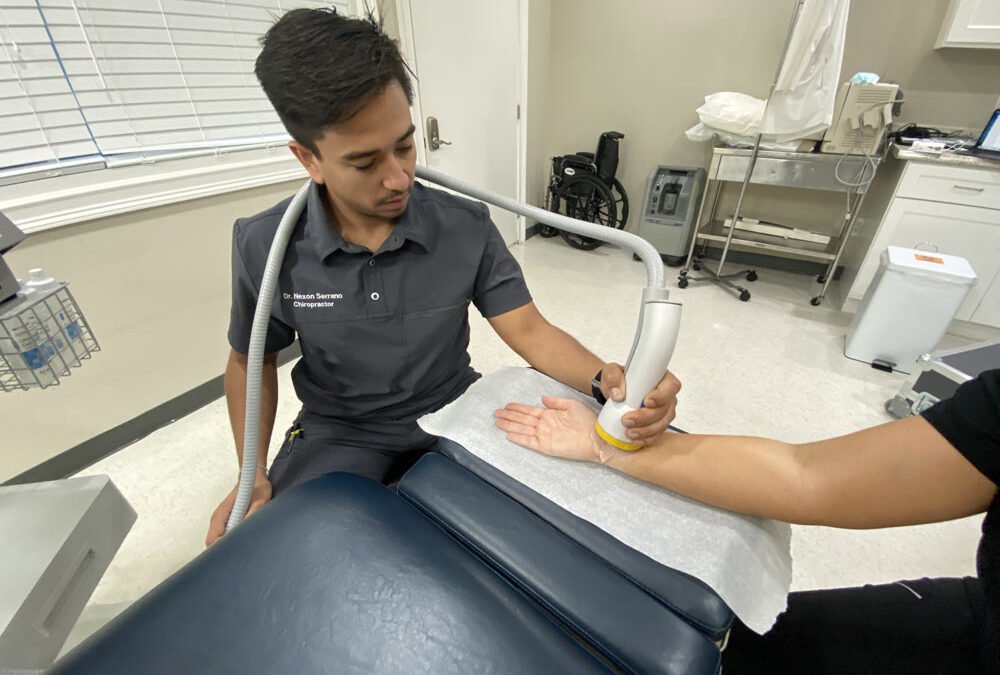Back pain can be a persistent and debilitating issue for many individuals, affecting their daily lives and overall well-being. Softwave Therapy for back pain has emerged as a promising option in the quest for effective remedies, offering targeted relief without the need for invasive procedures or medications. This innovative approach harnesses advanced technology to address back pain, providing hope for those seeking non-invasive solutions to their discomfort.
How Softwave Therapy Works
Softwave Therapy is a cutting-edge method that has gained recognition for its effectiveness in alleviating back pain. At its core, this treatment utilizes focused energy waves to stimulate the body’s natural healing processes. Unlike conventional therapies, which often require surgical intervention or medication, Softwave Therapy offers a non-invasive and drug-free alternative. This approach seeks to target the root causes of back pain by promoting blood circulation, tissue regeneration, and the reduction of inflammation.
The key to Softwave Therapy’s success lies in its precise delivery of acoustic waves to the affected area. When directed with precision, these waves can penetrate deep into the tissues, reaching areas that may be challenging to address through other means. By doing so, Softwave Therapy provides relief from pain and accelerates the body’s natural healing mechanisms. This results in a more holistic and sustainable approach to managing back pain, avoiding the potential side effects and risks associated with invasive procedures.
Patients undergoing Softwave Therapy typically experience minimal discomfort during the treatment process. The therapy is administered through a handheld device that emits these focused waves, which are applied directly to the target area. This non-invasive approach ensures that patients can resume their daily activities promptly, without the need for extended recovery periods. As Softwave Therapy gains prominence as a viable option for back pain relief, it offers hope to individuals seeking a non-surgical and non-pharmaceutical solution to their discomfort.
In addition to its non-invasive nature, Softwave Therapy stands out for its ability to customize treatment plans to suit individual needs. Healthcare professionals can adjust the intensity and frequency of the waves, tailoring the therapy to specific patient requirements. This personalized approach ensures that each patient receives the most effective and efficient treatment, enhancing the therapy’s reputation as a promising solution for targeted back pain relief.
The Benefits of Softwave Therapy
Softwave Therapy offers a range of advantages that make it a compelling option for individuals seeking relief from back pain. Here are some key benefits:
- Non-Invasive: Softwave Therapy is a non-invasive treatment, meaning there are no incisions, needles, or surgical procedures involved. This minimizes the risks and discomfort associated with invasive treatments.
- Drug-Free: Unlike many traditional approaches to pain management, Softwave Therapy does not rely on medication. This makes it a safe choice for those who prefer to avoid pharmaceuticals or who may have concerns about potential side effects.
- Quick Recovery: Patients can resume their daily activities immediately after a Softwave Therapy session. There’s no need for extended recovery periods, allowing individuals to get back to their routines without disruption.
- Targeted Relief: Softwave Therapy precisely targets the affected area, addressing the root causes of back pain. This focused approach can lead to more effective and long-lasting relief than broad-spectrum treatments.
- Stimulates Natural Healing: By promoting increased blood circulation, tissue repair, and reduced inflammation, Softwave Therapy harnesses the body’s natural healing processes. This can result in sustained pain relief and improved overall well-being.
- Customizable: Softwave Therapy can be tailored to suit each patient’s specific condition and needs. Healthcare professionals can adjust the treatment parameters to optimize results for individual cases.
- Minimal Side Effects: Softwave Therapy has minimal side effects, making it a well-tolerated option for many patients.
In summary, Softwave Therapy offers a non-invasive, drug-free, and highly targeted approach to back pain relief. Its ability to stimulate the body’s natural healing mechanisms and its customization options make it a promising choice for individuals looking to alleviate their discomfort and improve their quality of life.
Conditions Treated with Softwave Therapy
Softwave Therapy has shown efficacy in addressing a variety of conditions that cause back pain. This versatile treatment option can provide relief for several underlying issues, including:
- Muscle Strain and Tension: Softwave Therapy effectively relaxes tense muscles and reduces strain, which can be a common source of back pain.
- Herniated Discs: Patients with herniated or bulging discs can benefit from Softwave Therapy, as it helps stimulate the healing of damaged disc tissues.
- Arthritis: Those suffering from arthritis-related back pain may find relief through Softwave Therapy’s ability to reduce inflammation and improve joint function.
- Sciatica: Softwave Therapy can alleviate the discomfort associated with sciatica by targeting the affected nerve roots and reducing inflammation.
- Degenerative Disc Disease: This therapy can slow the progression of degenerative disc disease and relieve associated pain and discomfort.
- Sports Injuries: Athletes dealing with back injuries often turn to Softwave Therapy for its non-invasive approach and potential to speed up healing.
- Chronic Back Pain: Individuals experiencing chronic back pain, regardless of the specific cause, may find Softwave Therapy to be a valuable option for long-term relief.
- Post-Surgical Recovery: Softwave Therapy can aid post-surgical recovery by promoting tissue regeneration and reducing pain and inflammation after back surgery.
Softwave Therapy’s ability to address such a wide range of conditions makes it a versatile and valuable treatment option for those seeking relief from back pain. Its non-invasive nature and customizable parameters make it suitable for various individuals, offering hope to those with debilitating back discomfort.
What to Expect During a Softwave Therapy Session
A Softwave Therapy session is a straightforward, patient-friendly process designed to effectively alleviate back pain. Here’s a glimpse of what individuals can anticipate when undergoing this treatment:
Firstly, patients will meet with a trained healthcare professional who specializes in administering Softwave Therapy. During this initial consultation, the healthcare provider will evaluate the patient’s medical history, specific condition, and the area of back pain to be treated. This assessment allows for customizing the treatment parameters to ensure optimal results.
Once the assessment is complete, the patient will be comfortably positioned for the Softwave Therapy session. The healthcare provider will use a handheld device that emits focused acoustic waves. This device is gently applied to the targeted area of the back, ensuring precise delivery of the therapeutic waves.
During the session, patients may experience mild sensations, often described as a tingling or pulsing feeling. These sensations are usually well-tolerated and not painful. The therapy session typically lasts for a predetermined duration, which can vary depending on the patient’s condition and treatment plan.
One of the key advantages of Softwave Therapy is the minimal downtime associated with it. After the session, patients can immediately return to their daily activities, making it a convenient choice for those with busy schedules. For many individuals seeking relief from back pain, Softwave Therapy offers a promising solution that combines effectiveness with convenience.
Is Softwave Therapy Right for You?
Determining whether Softwave Therapy is suitable for your back pain requires careful consideration and consultation with a healthcare professional. Here are some factors to contemplate when assessing if Softwave Therapy aligns with your needs:
- Type and Severity of Back Pain: Softwave Therapy can effectively address various causes of back pain, but it’s essential to pinpoint the specific condition causing your discomfort. Consultation with a healthcare provider will help determine if Softwave Therapy is appropriate for your situation.
- Medical History: Your medical history plays a crucial role in deciding whether Softwave Therapy is viable. Certain medical conditions or contraindications may affect your eligibility for this treatment. Be sure to provide your healthcare provider with a comprehensive medical history during your consultation.
- Treatment Goals: Consider your treatment goals and preferences. If you prefer non-invasive, drug-free solutions and wish to avoid surgery, Softwave Therapy may align with your preferences.
- Consultation with a Specialist: To make an informed decision, consult a healthcare professional experienced in Softwave Therapy. They can assess your case, discuss potential benefits and risks, and recommend a personalized treatment plan if appropriate.
Ultimately, the suitability of Softwave Therapy for your back pain depends on your unique circumstances and treatment objectives. By engaging in a thorough discussion with a qualified healthcare provider, you can better understand whether Softwave Therapy offers the targeted relief you seek.
Is Softwave Therapy Right for You?
When addressing back pain, exploring various treatment options is essential. Softwave therapy has emerged as a notable contender in the array of treatments available. Instead of a one-size-fits-all approach, individuals suffering from back pain should carefully evaluate whether softwave therapy aligns with their specific requirements. This consideration involves weighing the therapy’s benefits and understanding its potential effectiveness.
Softwave therapy offers a non-invasive and drug-free alternative to traditional treatments for back pain. It employs high-frequency sound waves to target the affected area, stimulating the body’s natural healing processes. Scientific evidence supporting the efficacy of softwave therapy suggests that it can provide substantial relief for many individuals. However, it’s vital to remember that not all back pain cases are the same, and the suitability of this therapy may vary from person to person.
Before opting for softwave therapy, individuals should consult a healthcare professional or chiropractor. A thorough evaluation of the severity and underlying causes of their back pain is crucial in determining whether softwave therapy is viable. Additionally, discussing any existing medical conditions, allergies, or medications with the healthcare provider can help ensure the safety and effectiveness of the treatment.
In conclusion, softwave therapy is a promising avenue for those seeking relief from back pain. However, it’s not a universal solution, and its suitability should be assessed on an individual basis. By consulting with a qualified healthcare professional, individuals can make informed decisions regarding their back pain treatment options, potentially finding the targeted relief they seek.
Contact Rittenhouse Square Chiropractic
If you’re considering softwave therapy as a viable option to address your back pain, our dedicated team at Rittenhouse Square Chiropractic is here to assist you. We understand the importance of personalized care and aim to provide tailored solutions for your requirements. Our experienced professionals will guide you through the process, answering any questions and scheduling your softwave therapy sessions at your convenience. Don’t let back pain hinder your daily life; contact us today to take the first step towards targeted relief and improved mobility.

